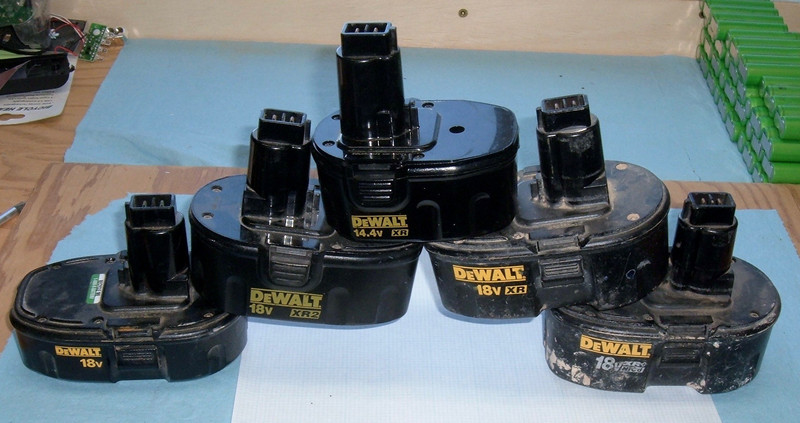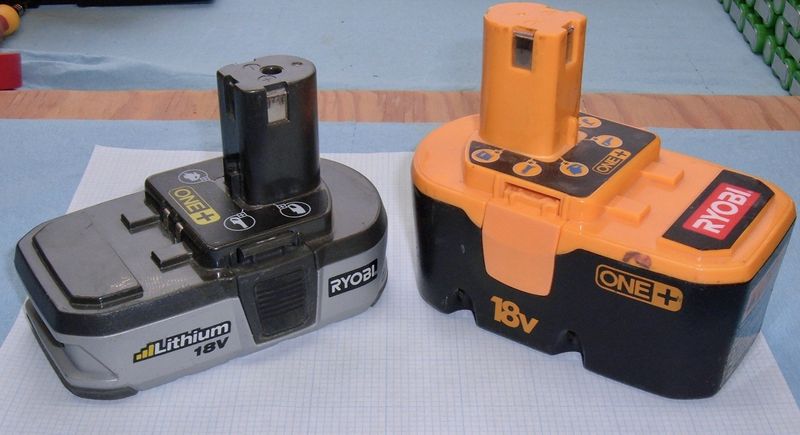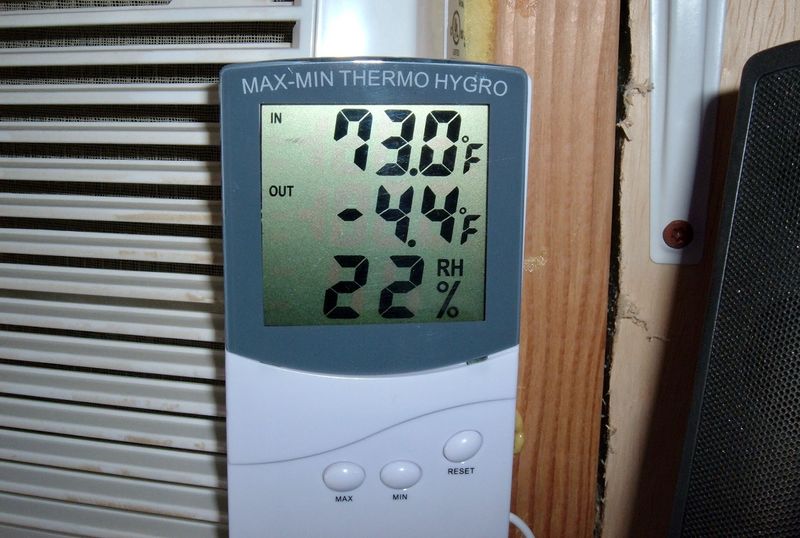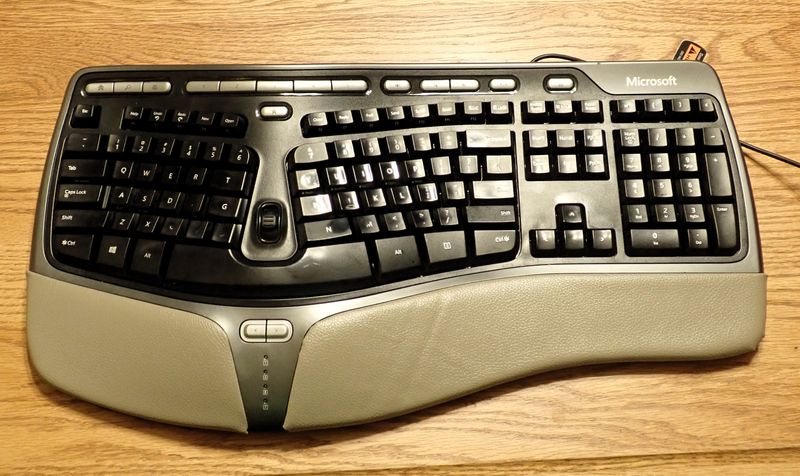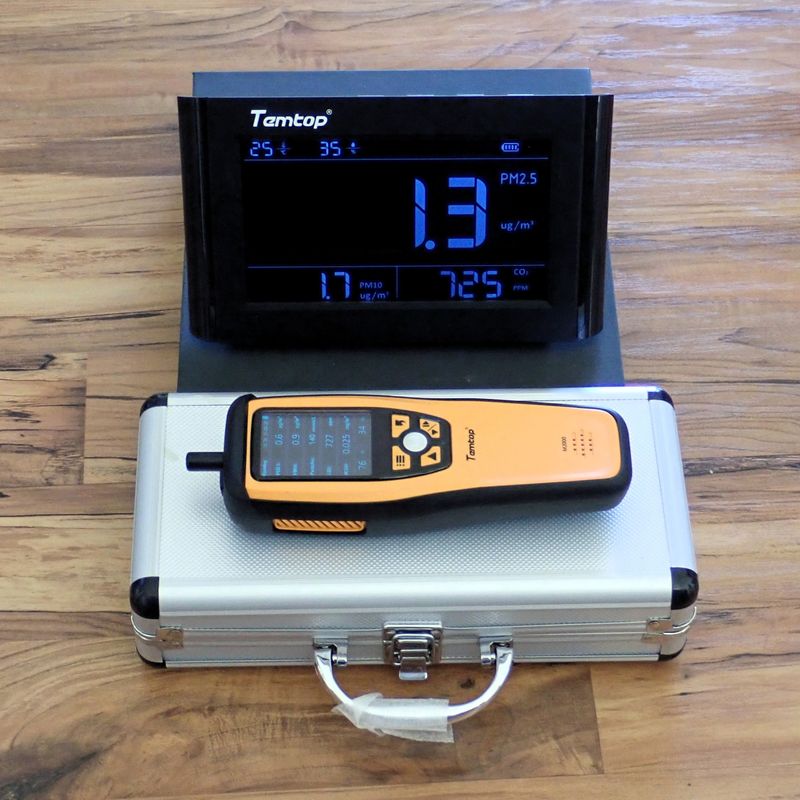It’s the last week in May - so the last week of tool pack teardowns for a while.
This week, I’ve got a huge pile of older DeWalt 18V NiCd batteries (and a lone 14.4V battery) that need to come apart so I can remove them from my office and get some space back.
I’ve got a 14.4V XR pack, a stock 18V pack, an 18V XR pack, an 18V XR2 pack, and an 18V XR+ NiCd pack. They look pretty similar on the outside, but the similar form factors conceal some (very) minor interior differences!
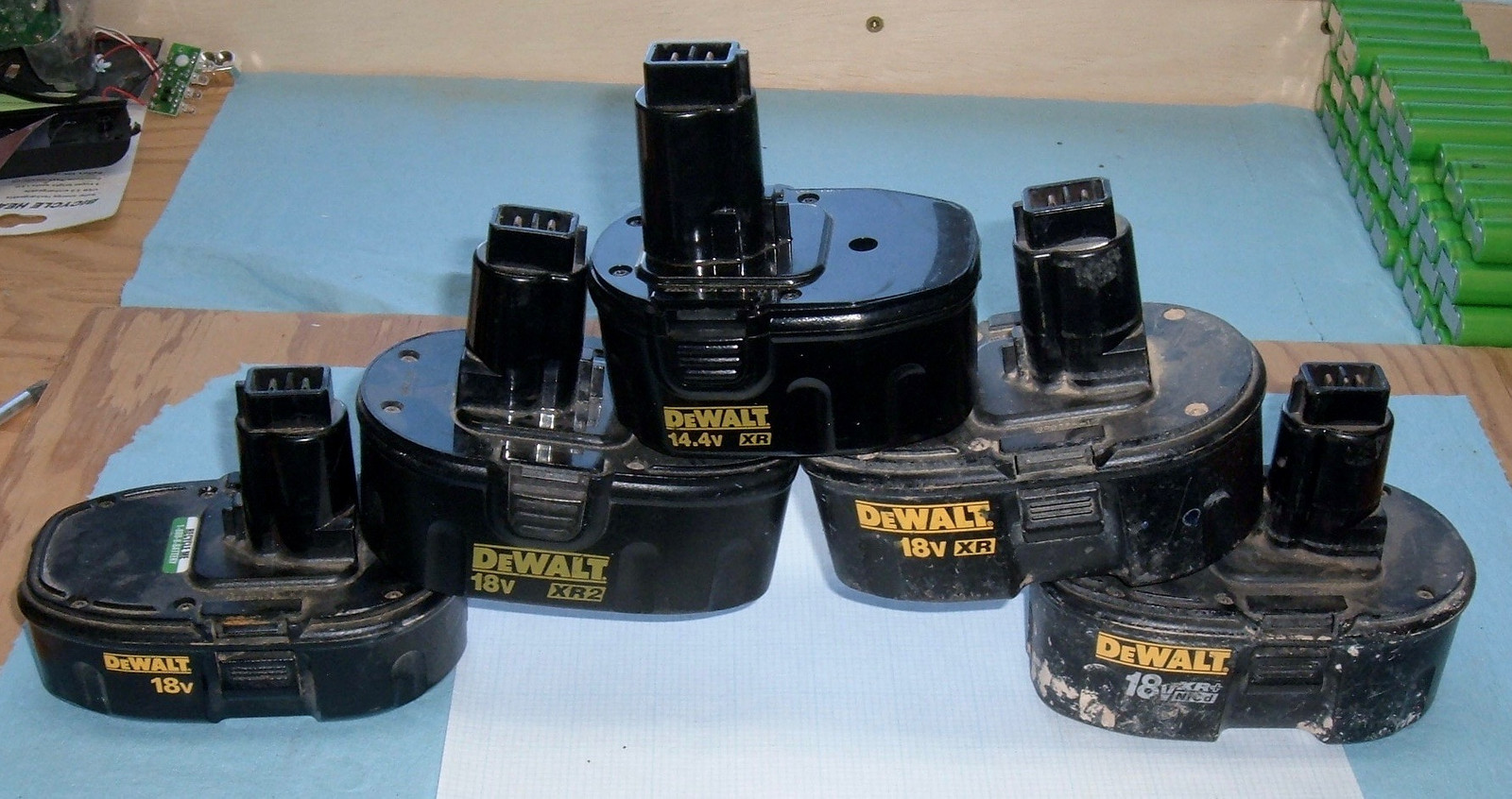
Are you interested? Well, if you’ve seen one NiCd pack, you’ve seen most of them - this is not one of my more exciting posts. But, read on if you’re curious.
DeWalt 14.4V XR (DW9091)
This is a somewhat smaller battery, as might be expected for a lower voltage system. It’s a 774g (1lb, 11.3oz) battery pack that’s almost entirely dead - as are all the ones I have here. Nickel cadmium (NiCd) cells have a high self discharge rate - so sitting for a year or two makes them totally dead.
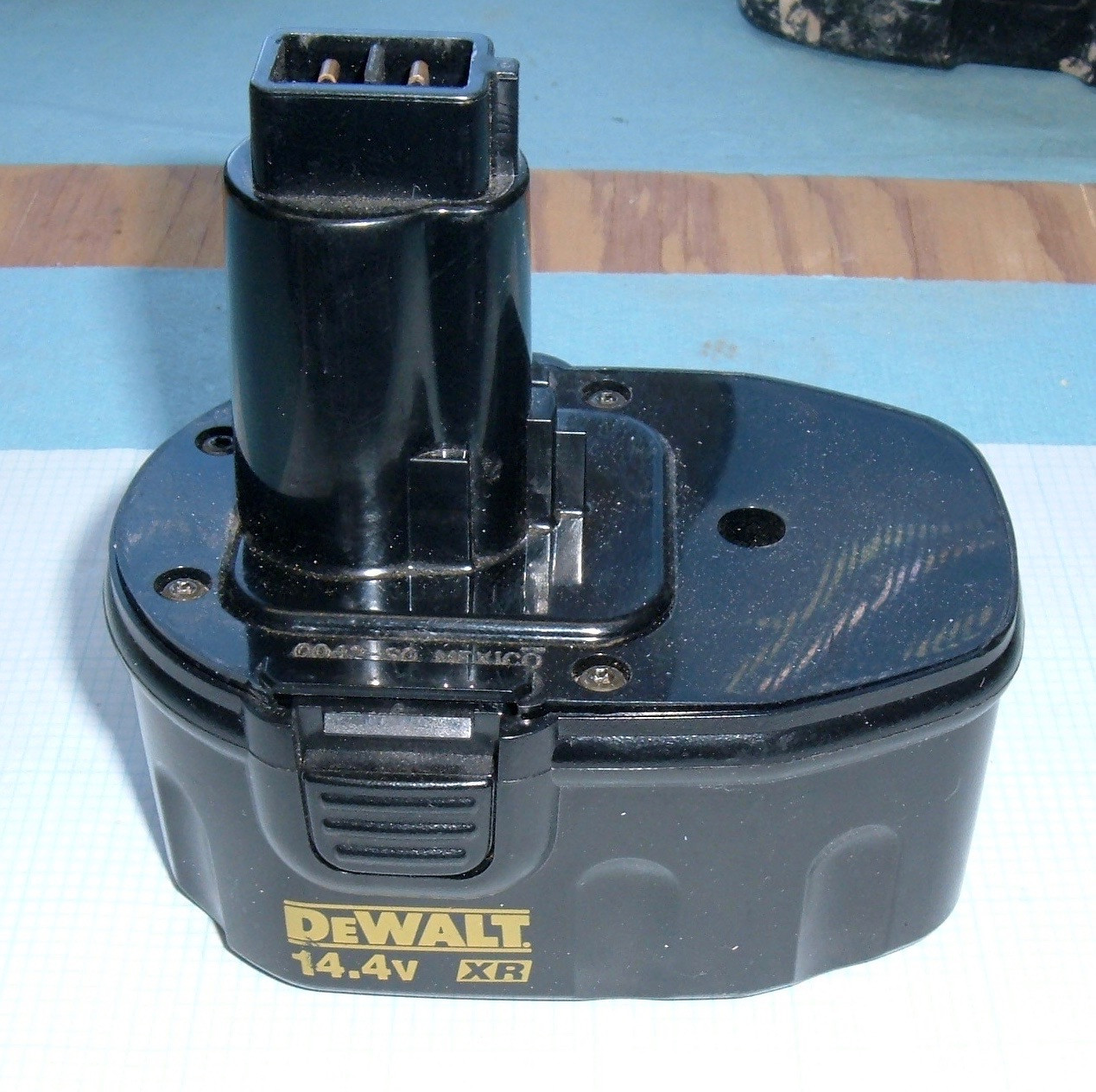
Unlike the newer lithium packs and their many-pronged interfaces, this pack has two pins. One positive, one negative. No thermal management, no balancing connectors, nothing extra. Just the basics!
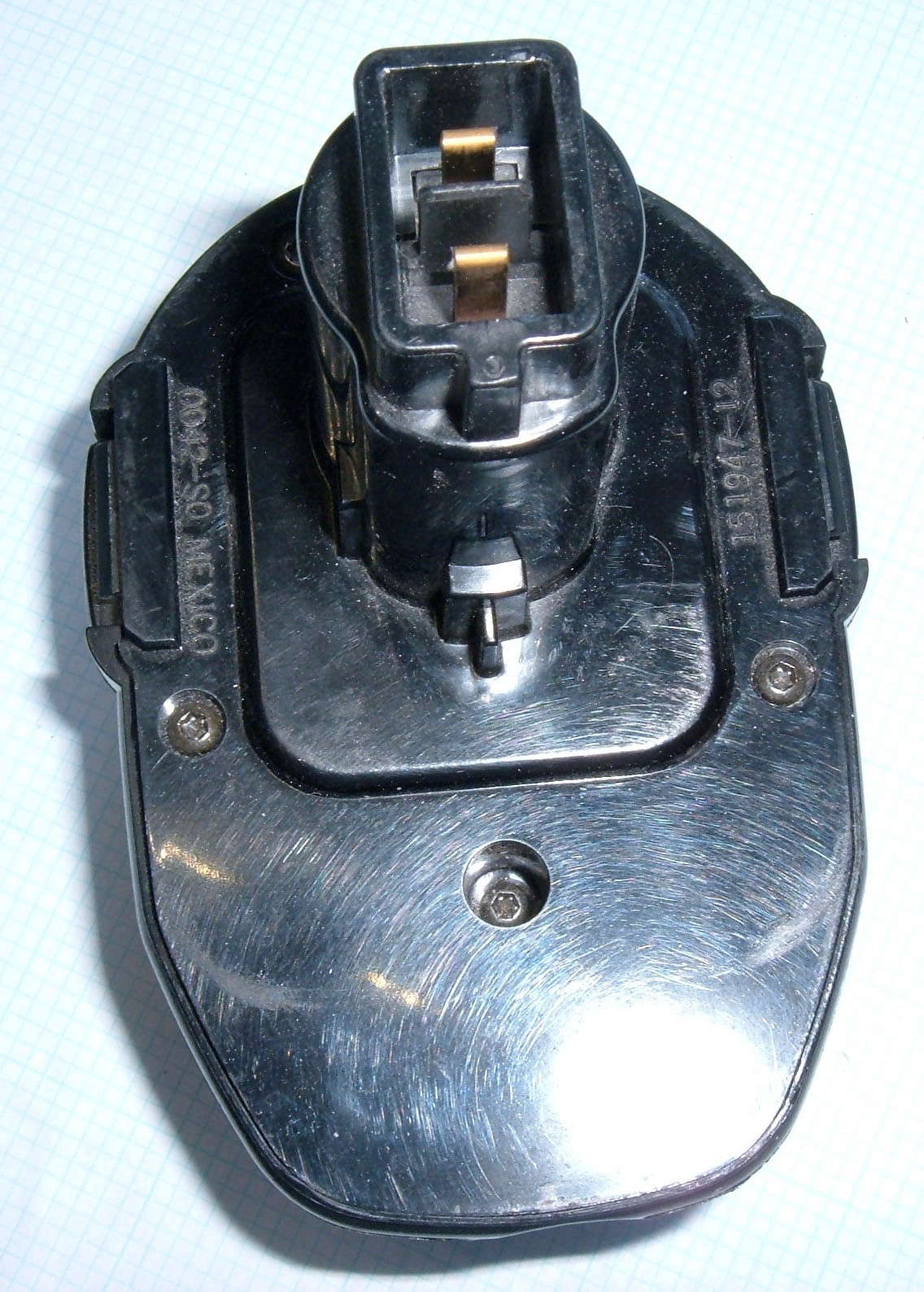
I don’t entirely understand why the old NiCd packs include nothing about capacity ratings - it doesn’t seem like it would be hard. I assume because then people might realize that the XR/XR2/XR+/XP7/whatever packs aren’t as different as might be hoped.
Otherwise, there’s not much beyond the normal NiCd warnings. Don’t incinerate it. Don’t use it if damaged. Recycle it.
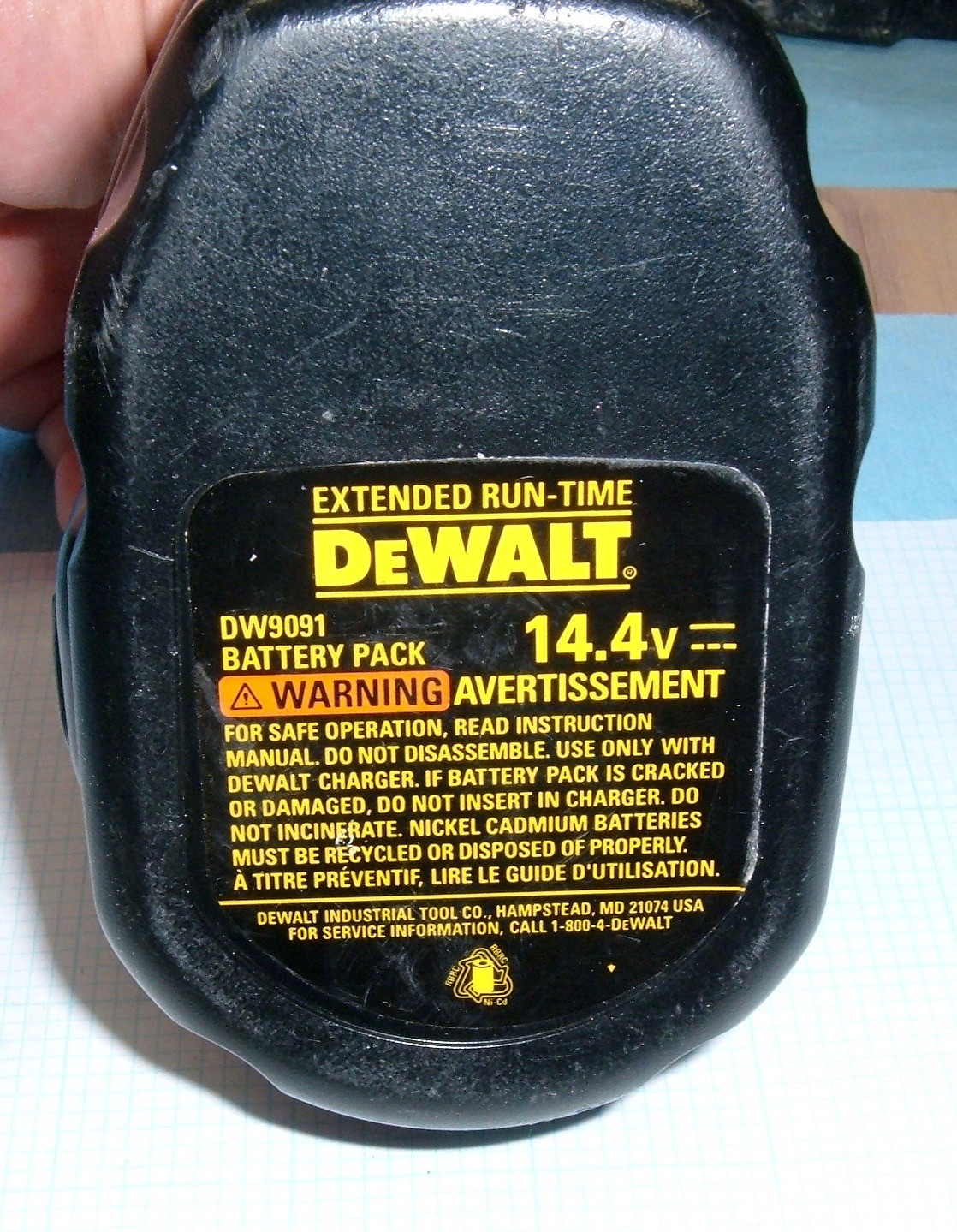
No security screws on this pack! Just normal Torx T10s. The top comes off to reveal the normal 18V arrangement, with one cell shoved up the stem, and a pair of contacts. Nothing extra. Not even a thermal sensor!
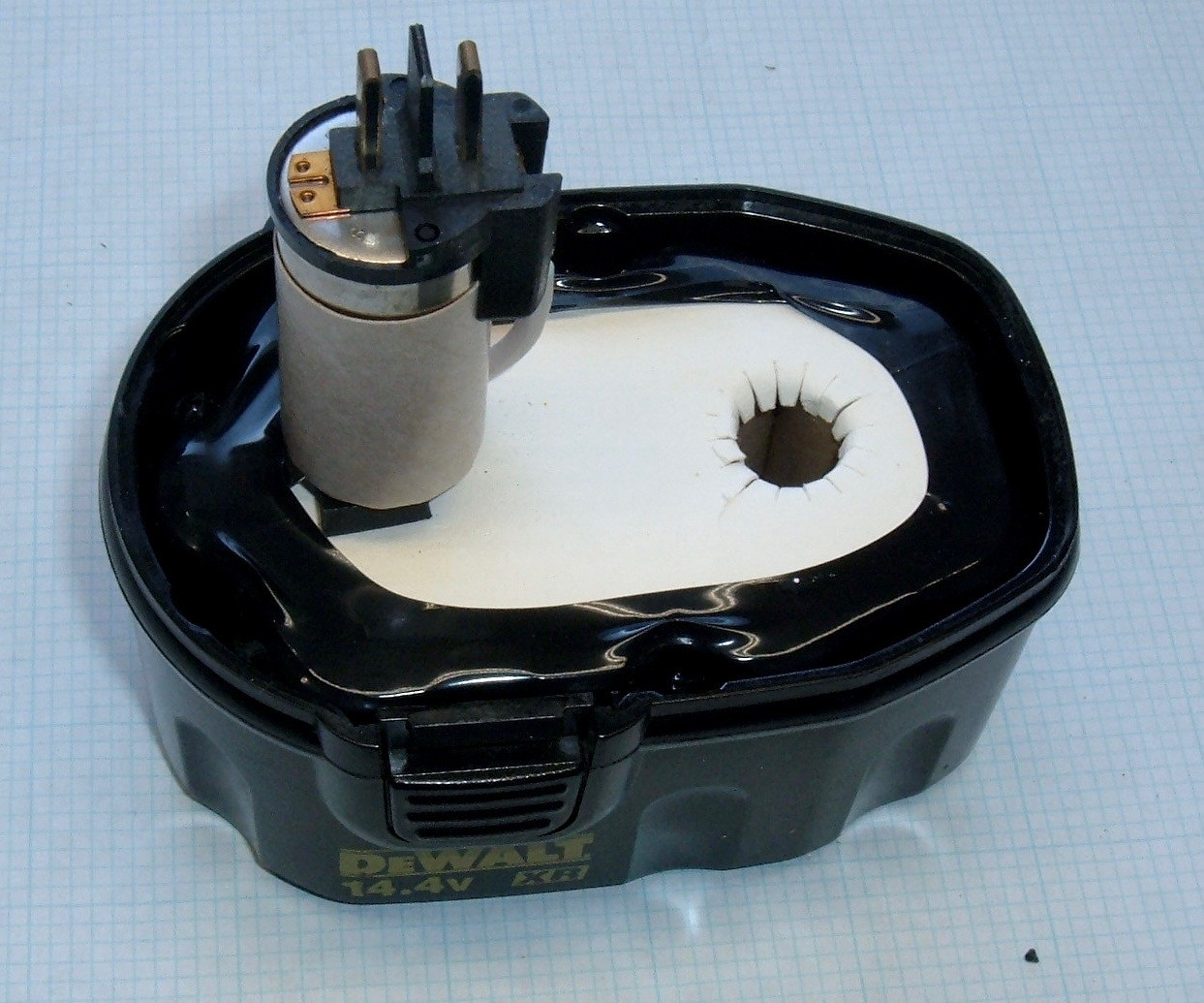
With a bit of gentle persuasion, the battery pack slides out of the case bottom. No extra screws or anything - just a friction fit. The core of the pack is shrink wrapped with a cardboard layer on the top and bottom. This cardboard has a weak adhesive on it, but mostly comes off in one piece. The hole in the pack is for the post in the base - this is just another screw in the top.
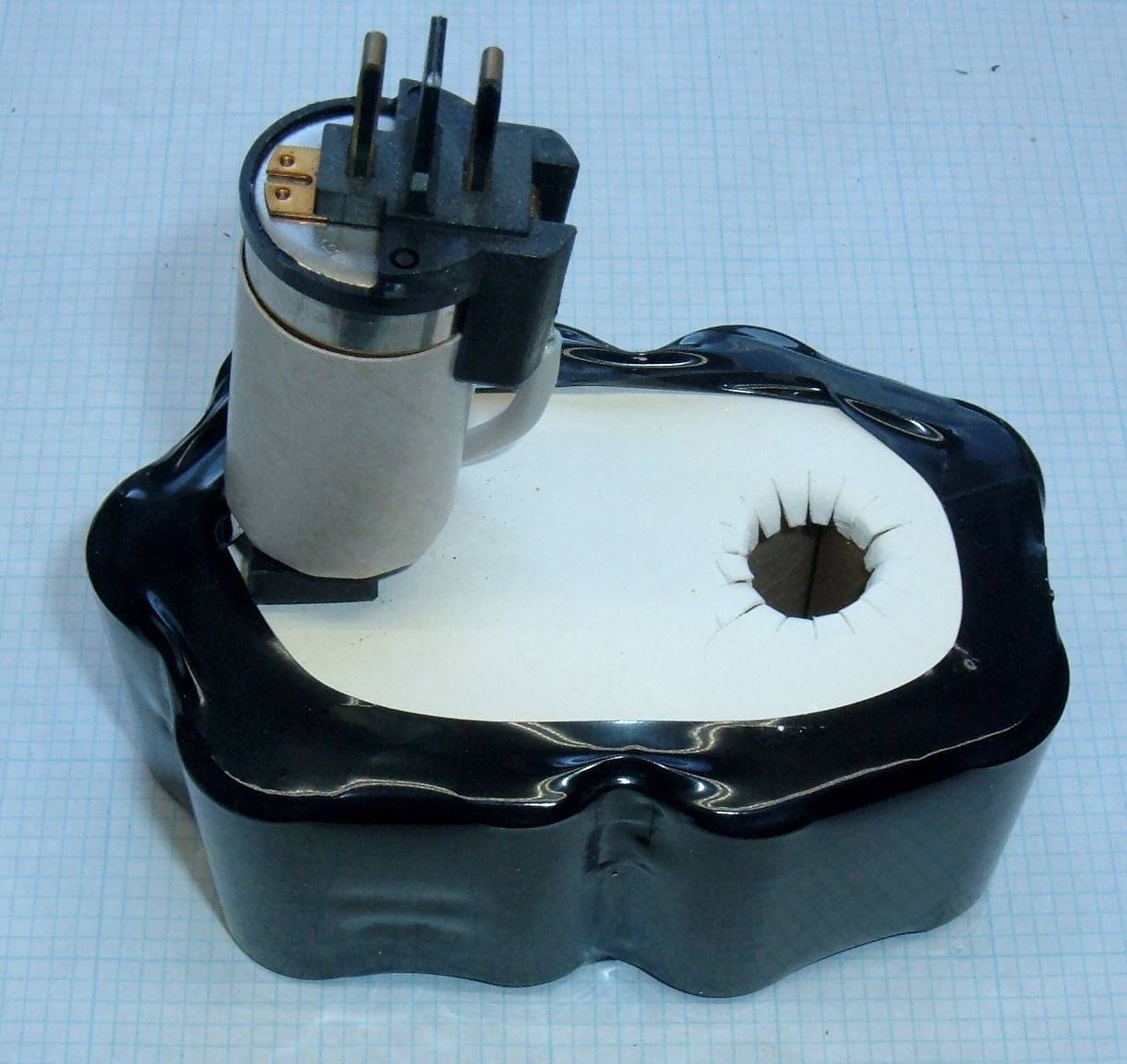
The underside shows the layout - nothing terribly exciting, but this might be a useful reference if you intend to build one. The pack is spot welded together, as is normal, and the strips don’t bother going to the center of the cells. There’s no reason to, with entirely metal cell bottoms like this and relatively low currents.
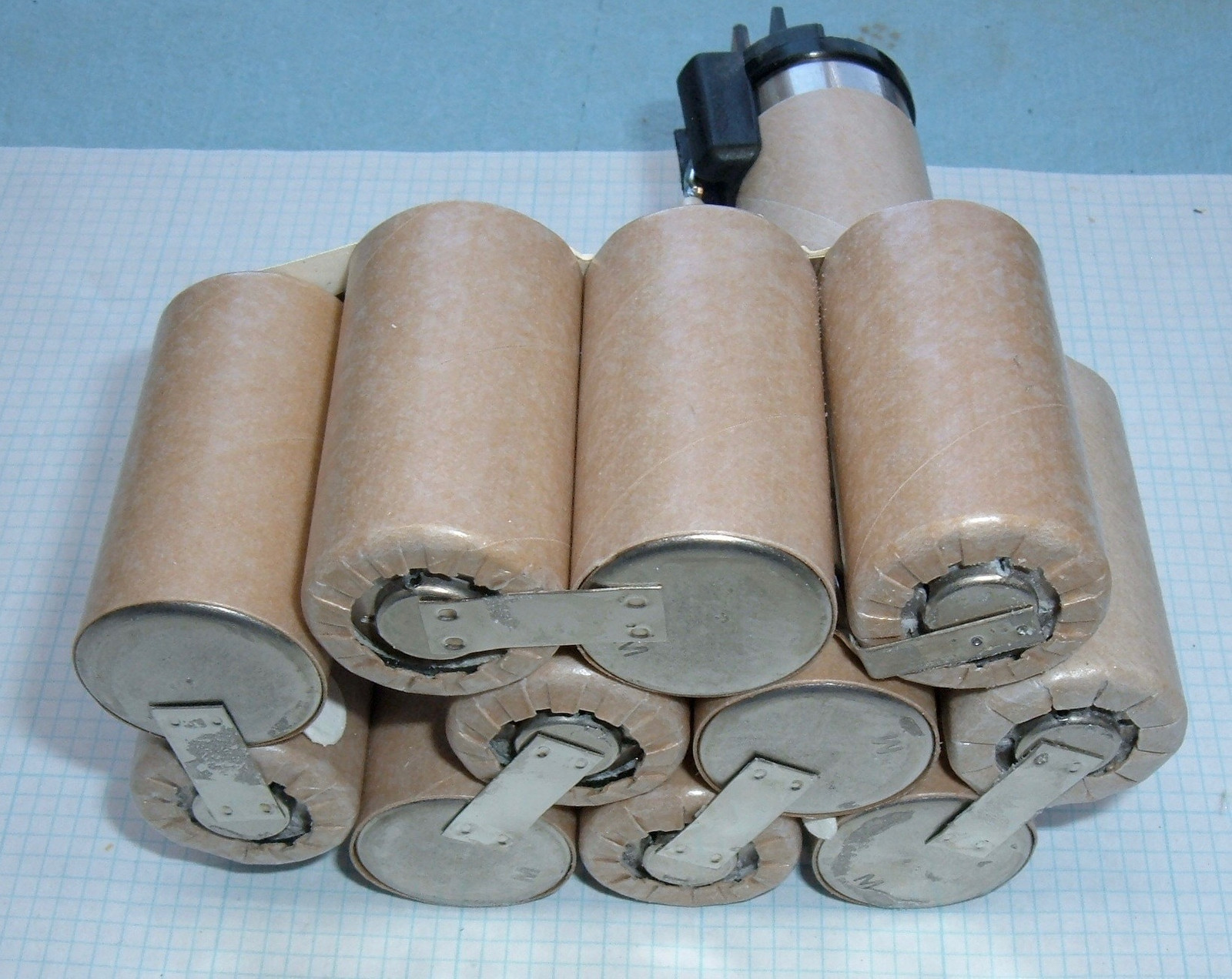
And, the top! Again, this is mostly useful as a reference if you’re trying to rebuild one of these packs.
I have absolutely no idea what these cells are. The are entirely unlabeled, and I’ve got zero clue as to what the capacity is, or any other characteristics.
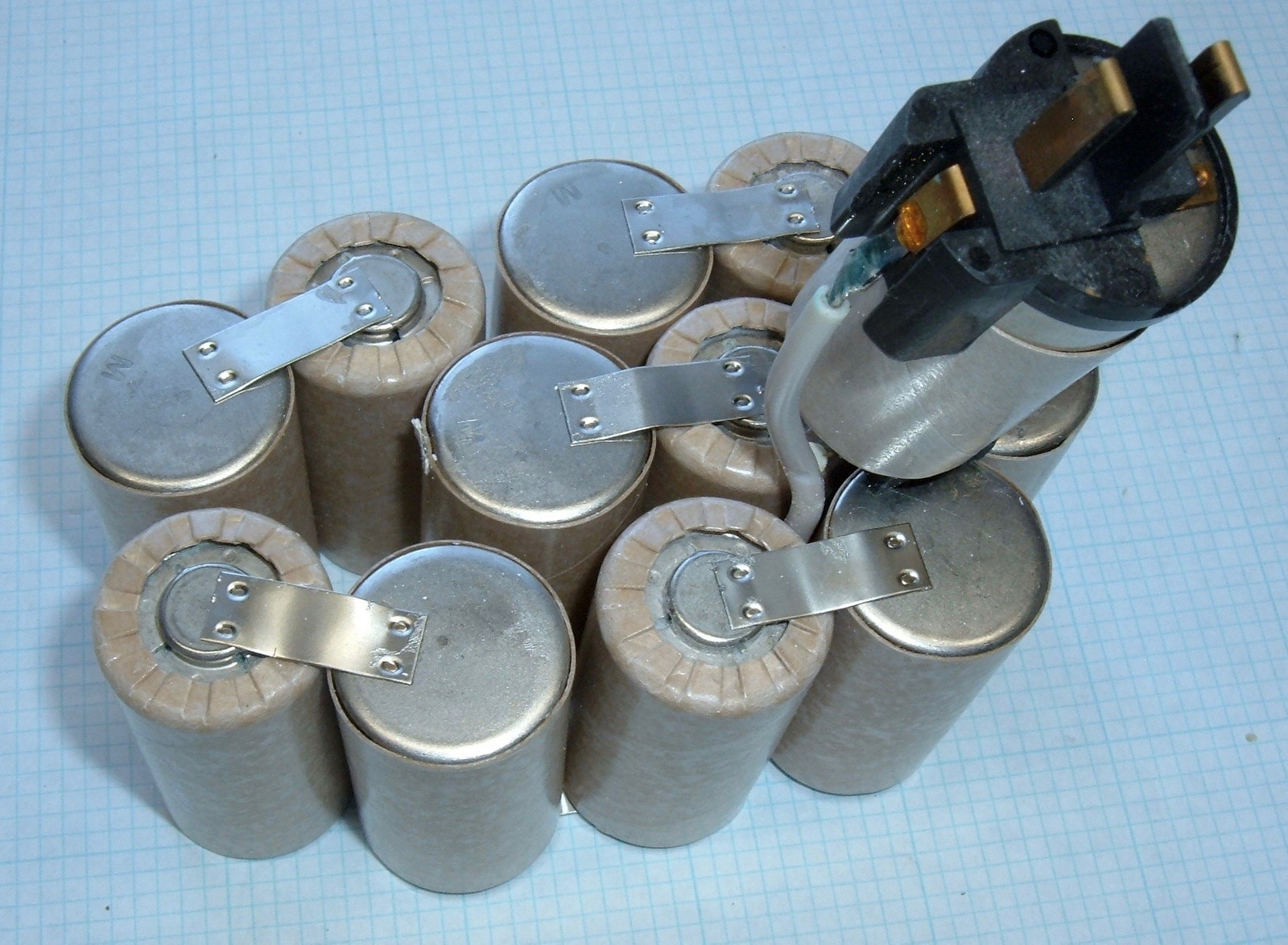
DeWalt 18V (DW9098)
This is, as far as I can tell, the “stock” DeWalt 18V tool pack. It’s just “18V” - no bloody XR, XR2, or XR+! Like the 14.4V pack, there is simply a pair of pins, reading 1.365V (almost, but not entirely, completely dead). This pack weighs in at 756g (1lb 10.7oz).
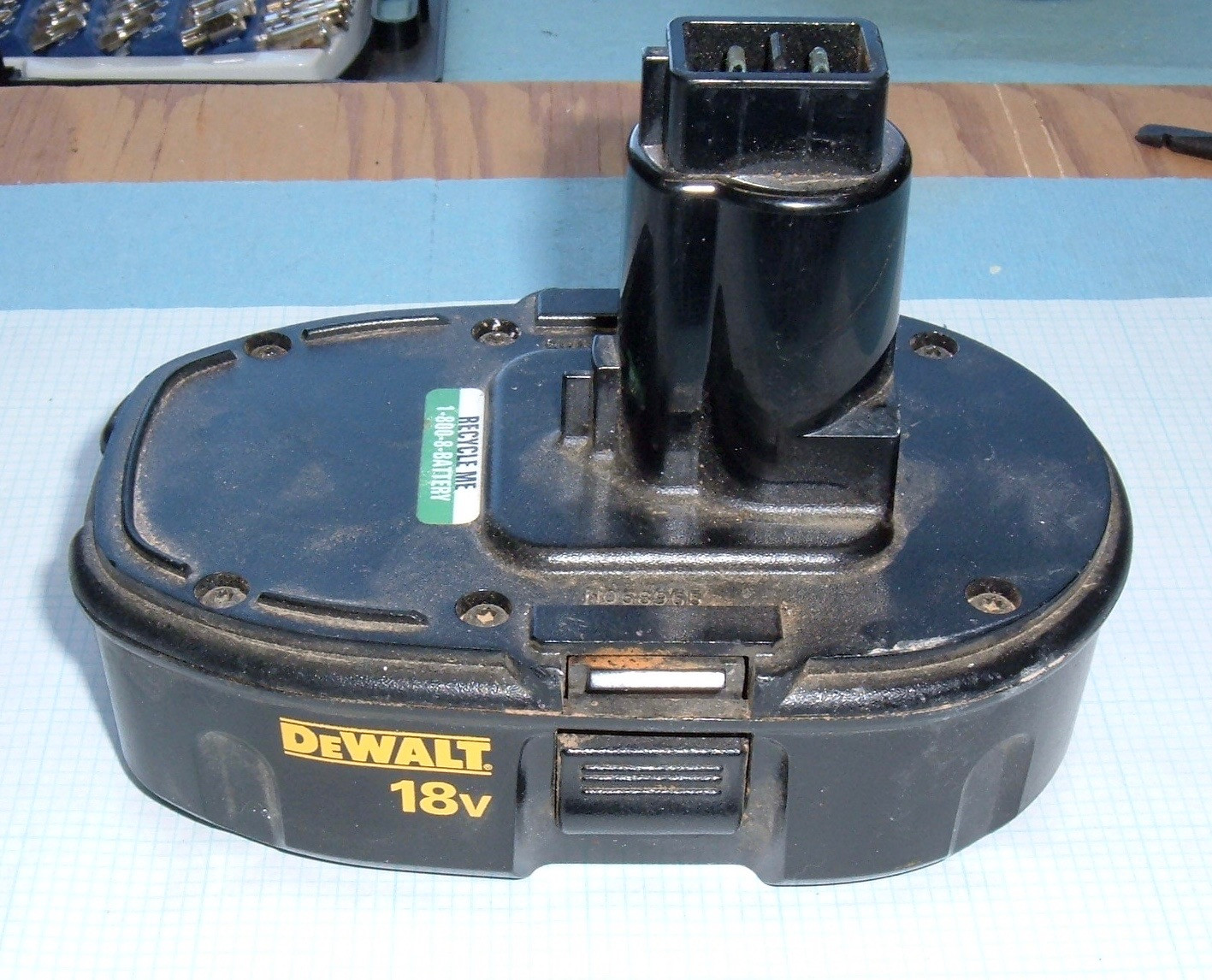
And, like the other packs, there’s no mention of capacity. I really would like to understand the requirements to be a “Type 1” or “Type 2” pack, though.
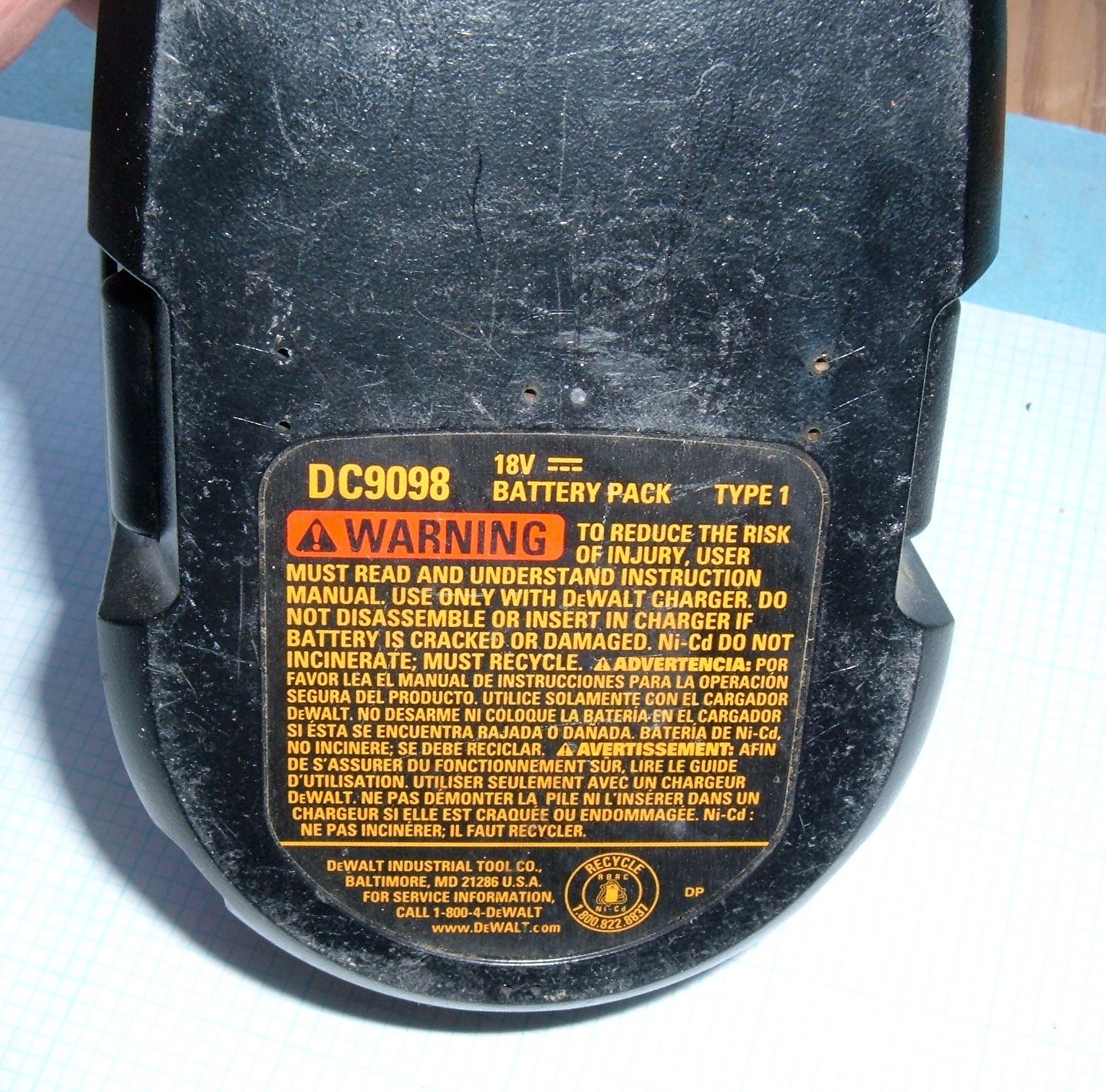
There are no security screws at all on these packs!
And… ew. This pack seems to be badly rusted out on the inside. I assume it got very wet and was never dried, but it’s toast. Or some cells vented and made a mess. I don’t know, and I’m pretty sure I don’t want to know.
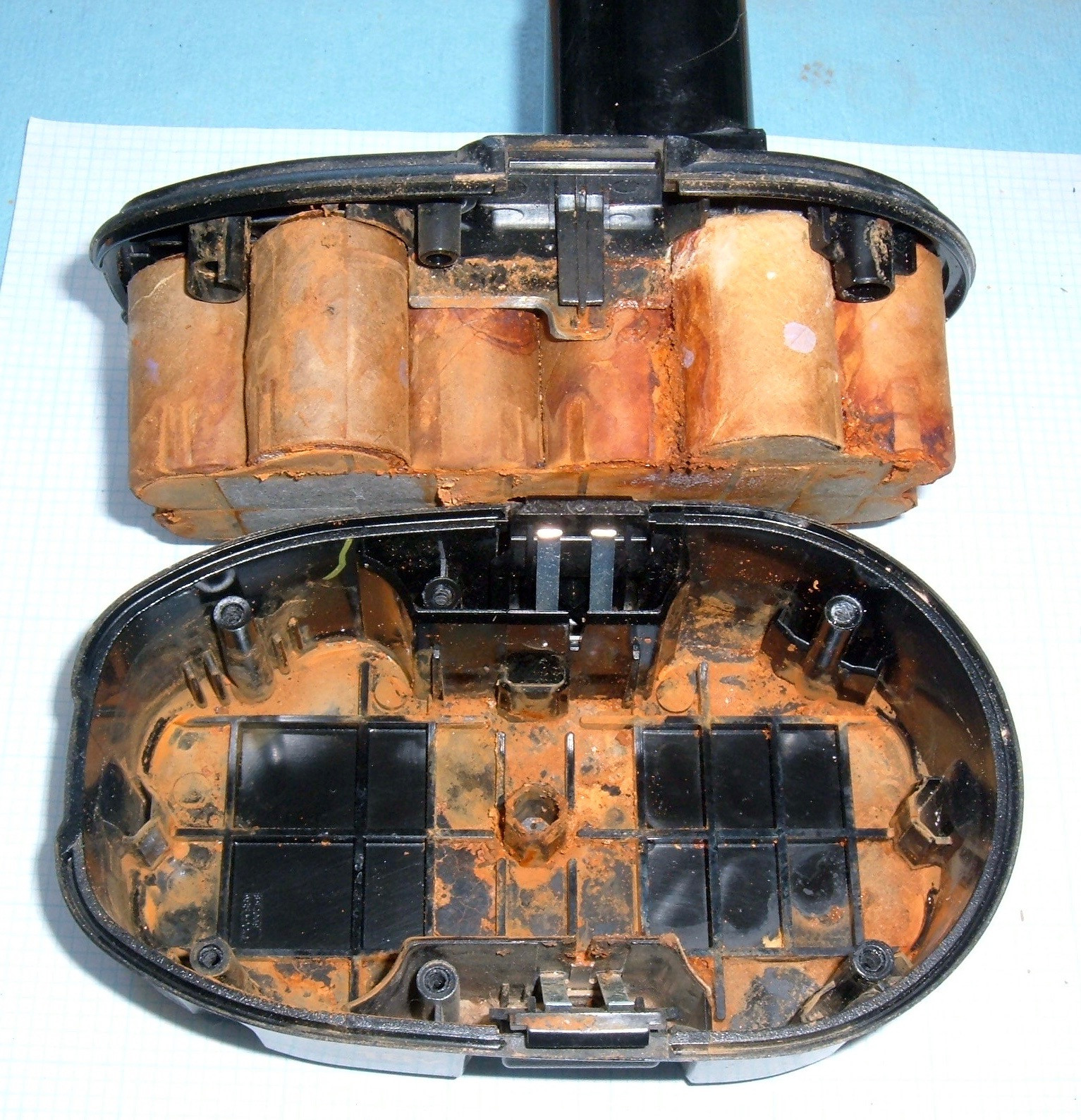
Here’s the bottom layout - you can figure out the top if you need it. Sorry, this exceeds my “stuff I’m willing to mess with for fun” tolerance by a lot.
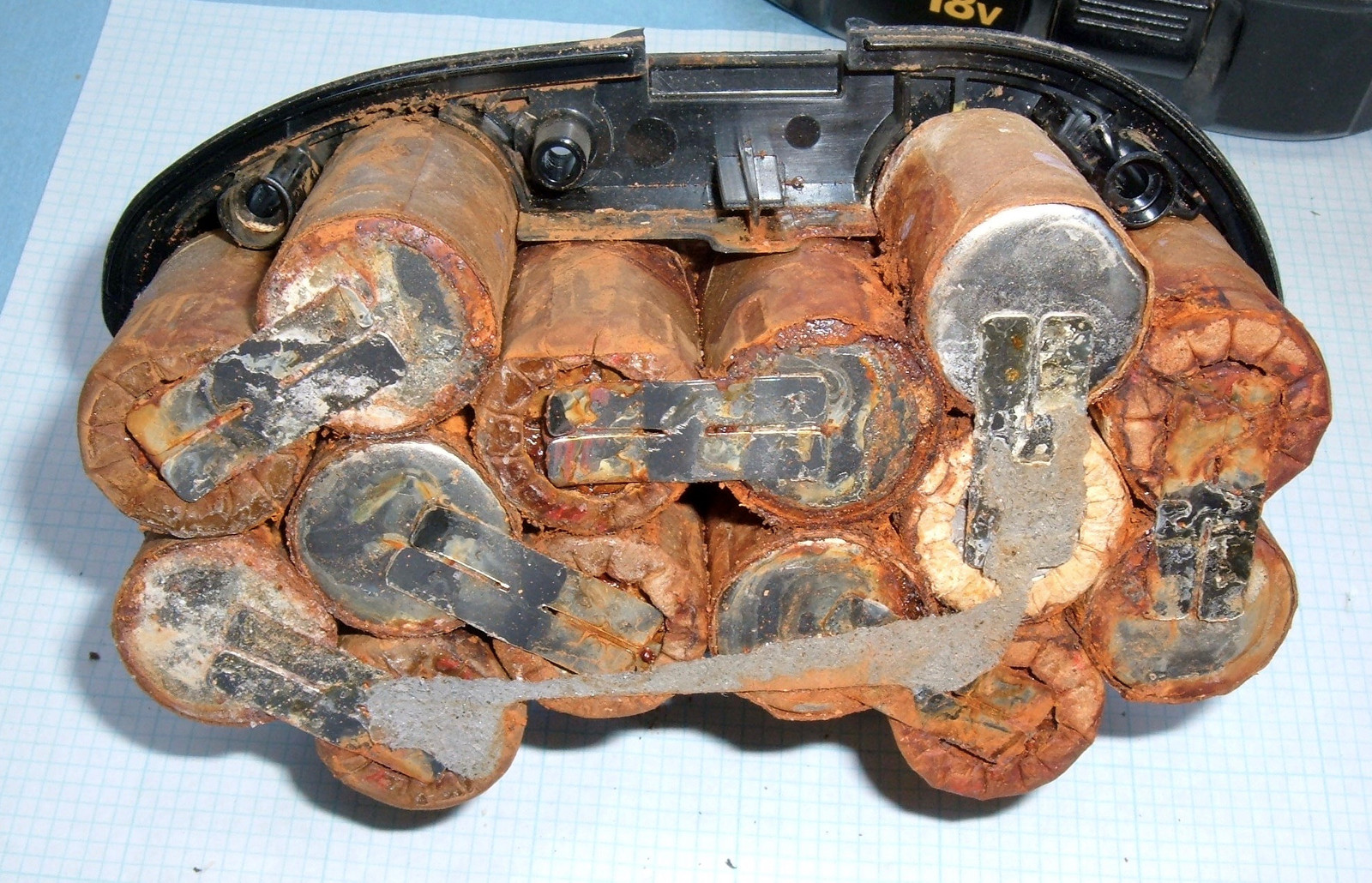
DeWalt 18V XR (DW9099)
The DeWalt 18V XR is an Extended Runtime (XR) battery that is pretty much the same thing as the previous cells. I have no idea how extended the runtime is, but there are just the two contacts on top, like the previous cells.
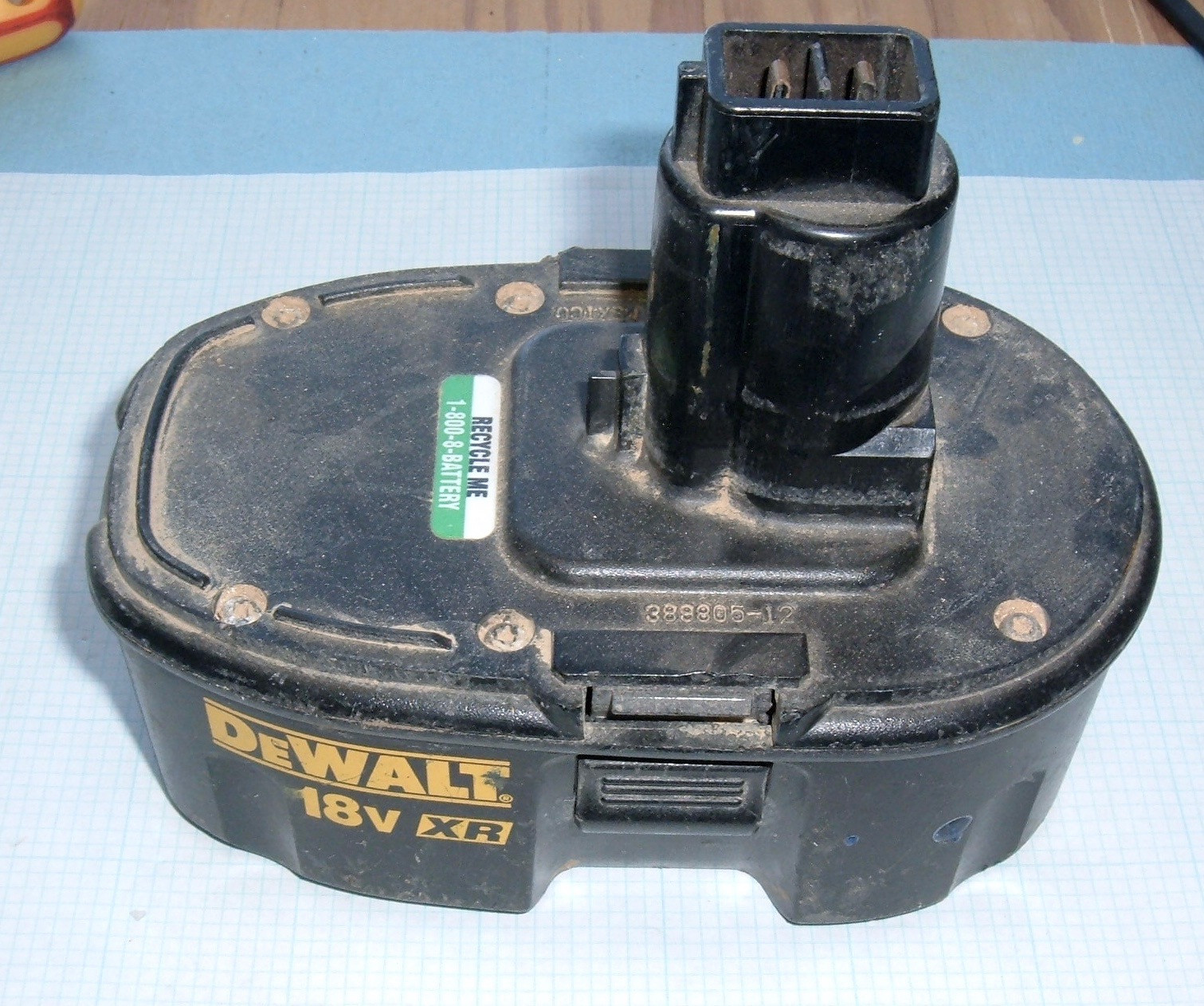
The bottom is exactly the same as the previous pack, down to the “Extended Runtime” label. There’s nothing new down there. The same non-security T-10 Torx screws open it, and… eew.
I don’t know where these packs came from, exactly, but apparently someone thought going swimming with their tool packs was a good idea. Or they got left out in a flood. I’m not sure how you get enough water in the pack to make this kind of mess, but this is two in a row. Keep your ~powder~ tool packs dry! And maybe charge them on occasion.
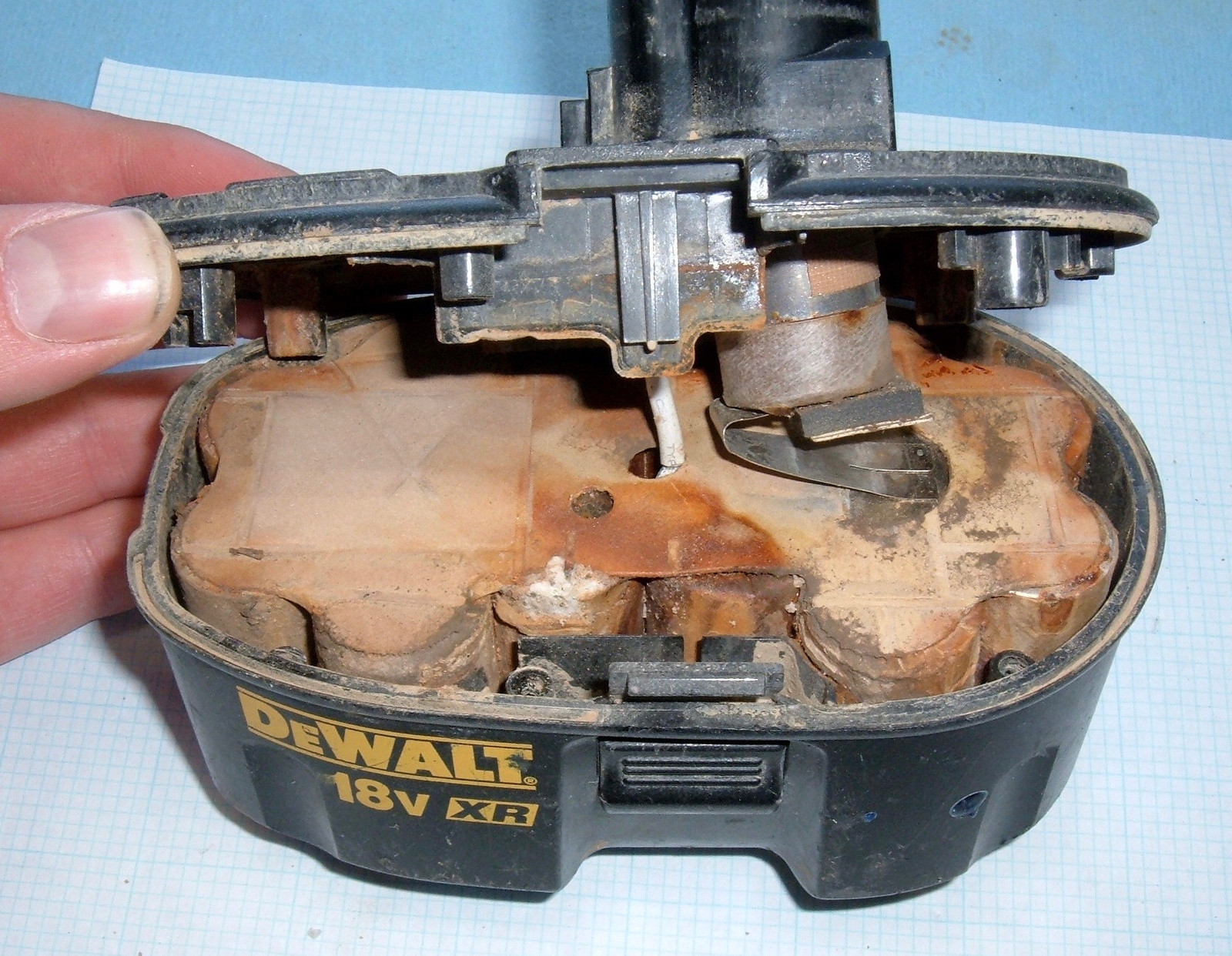
DeWalt 18V XR+ NiCd (DW9096)
The next pack here is the XR+ pack - yet another 18V pack. This pack weighs in at a whopping 1068g (2lb 5.7oz) - it’s a heavy pack! Underneath is the usual set of warnings and yet another “Extended Runtime” label - no capacity or anything else listed.
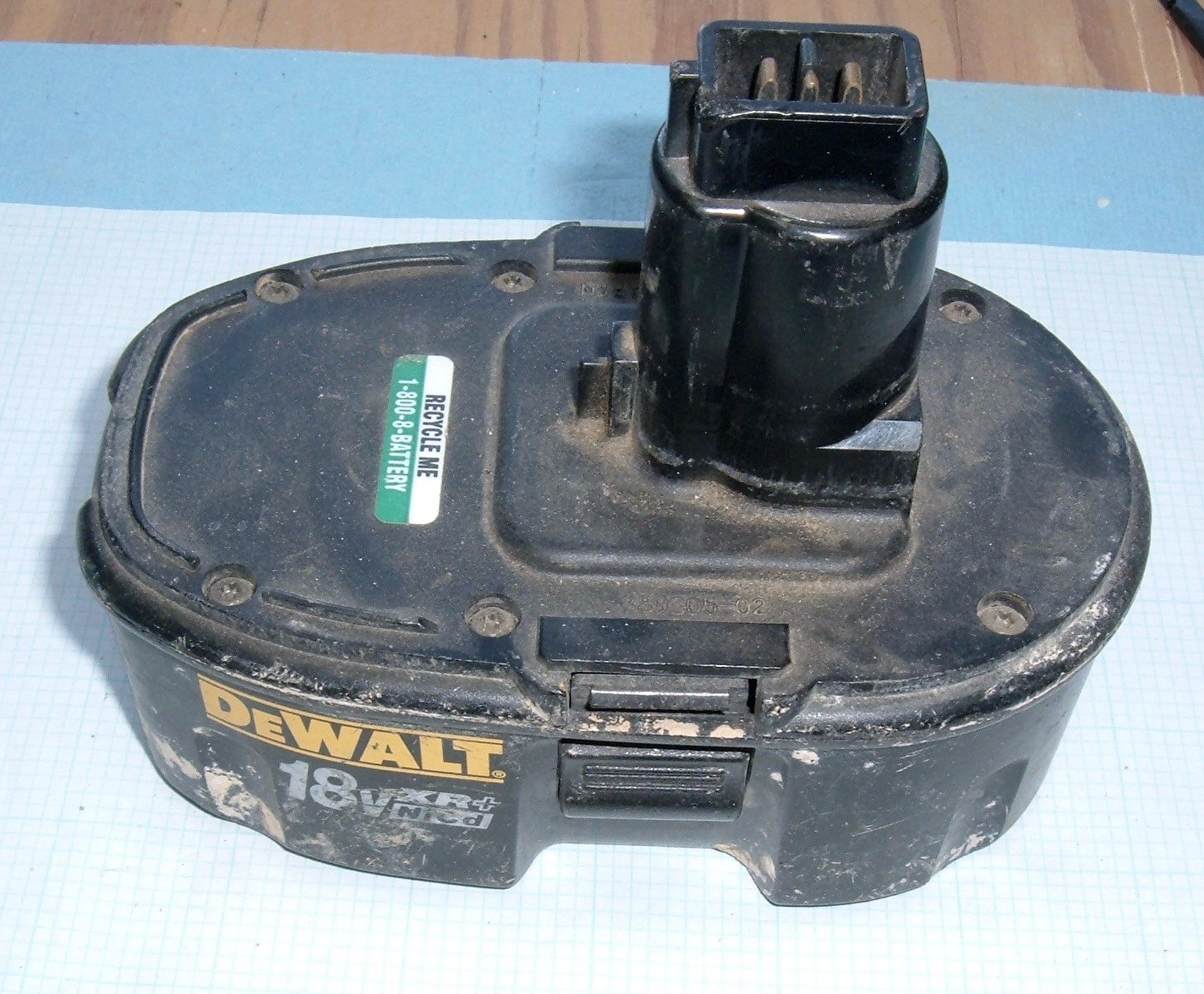
But, this pack has an exciting new terminal on it! Right in the middle where it won’t make contact with the tool (based on the older packs), there’s a tiny little terminal on the side! And based on the resistance measurement between that and the negative terminal of 10.74kΩ, I have a pretty solid idea of what this is.
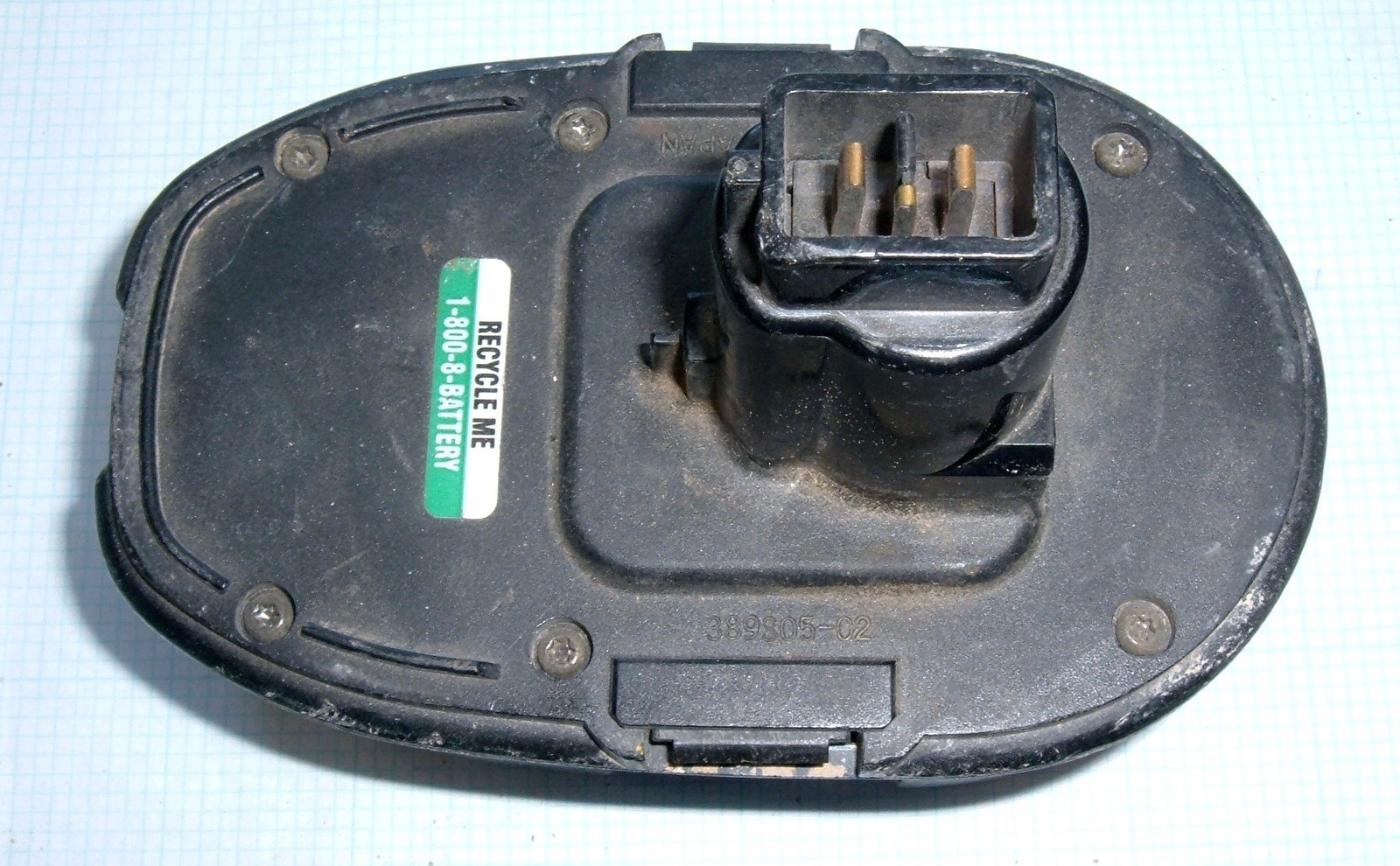
The pack comes apart as normal and there’s a little 10k NTC thermistor taped to the top of the pack, wired to that center terminal!
This is a normal thermistor for newer packs - the resistance is ideally 10 kΩ at 25C. As the thermistor gets colder, the resistance increases, and as the pack gets hotter, the resistance decreases. This is useful to prevent charging when the pack is too hot, but can also let the charger identify the problem and show some indication to the user. I’ve seen some resetting thermal fuses used in other packs, and they don’t give any indication to the user when tripped - the pack just won’t charge until it cools.
Unfortunately for teardown purposes, the red insulation on this particular pack is seriously sticky, and seriously brittle. It just doesn’t come off.
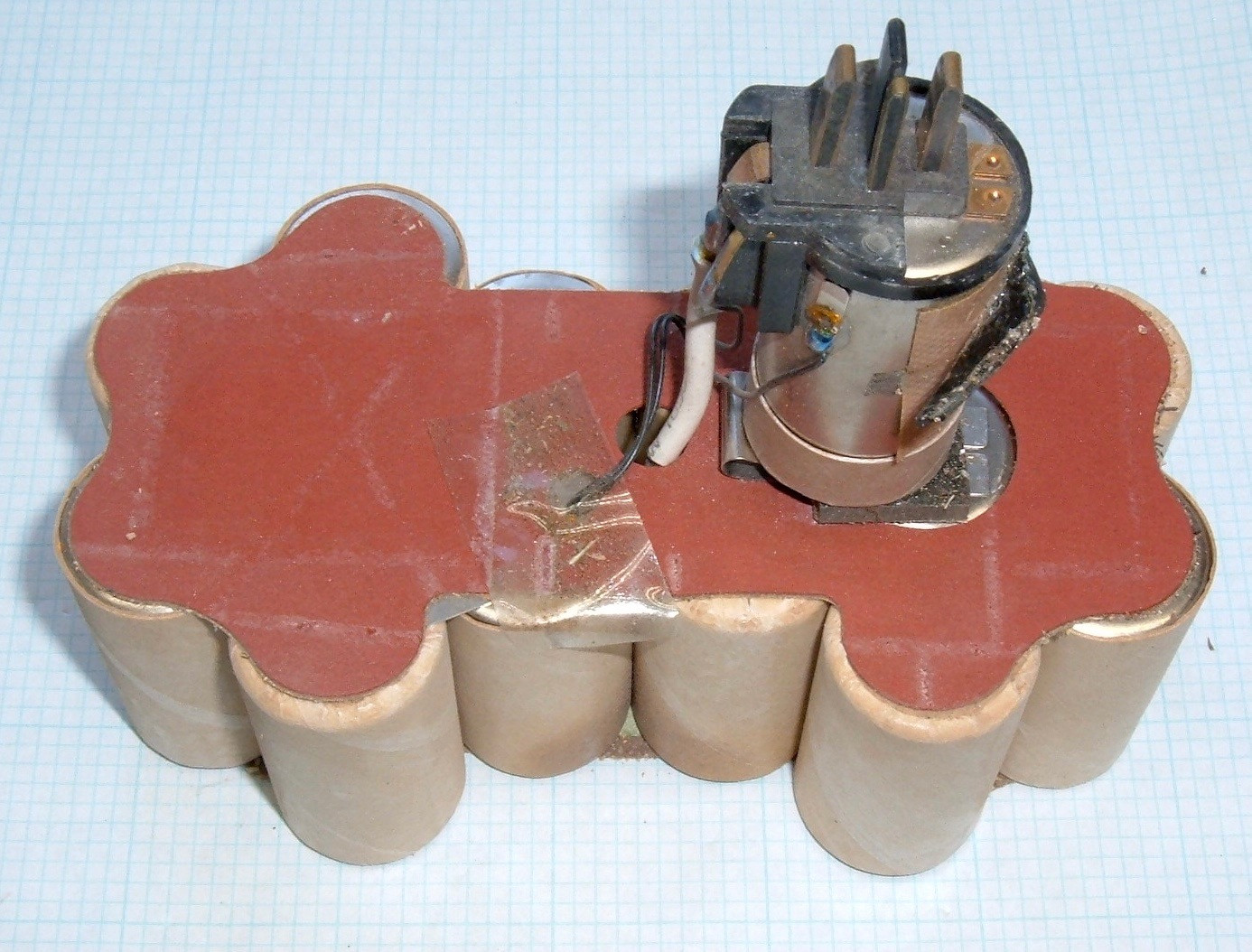
It looks like the center bottom of the pack got pretty hot at one point - the darker spots look like thermal stress to me. One problem with any dense pack design is cell cooling - keeping the cells cool under heavy use is hard, and I’m not sure this pack did a great job of it. Usually the center is the hardest area to cool, and that’s right where the heat stress appears.
In any case, you’d have to pull the insulation off to figure out the wiring for this pack. It’s probably similar to others of the same form factor.
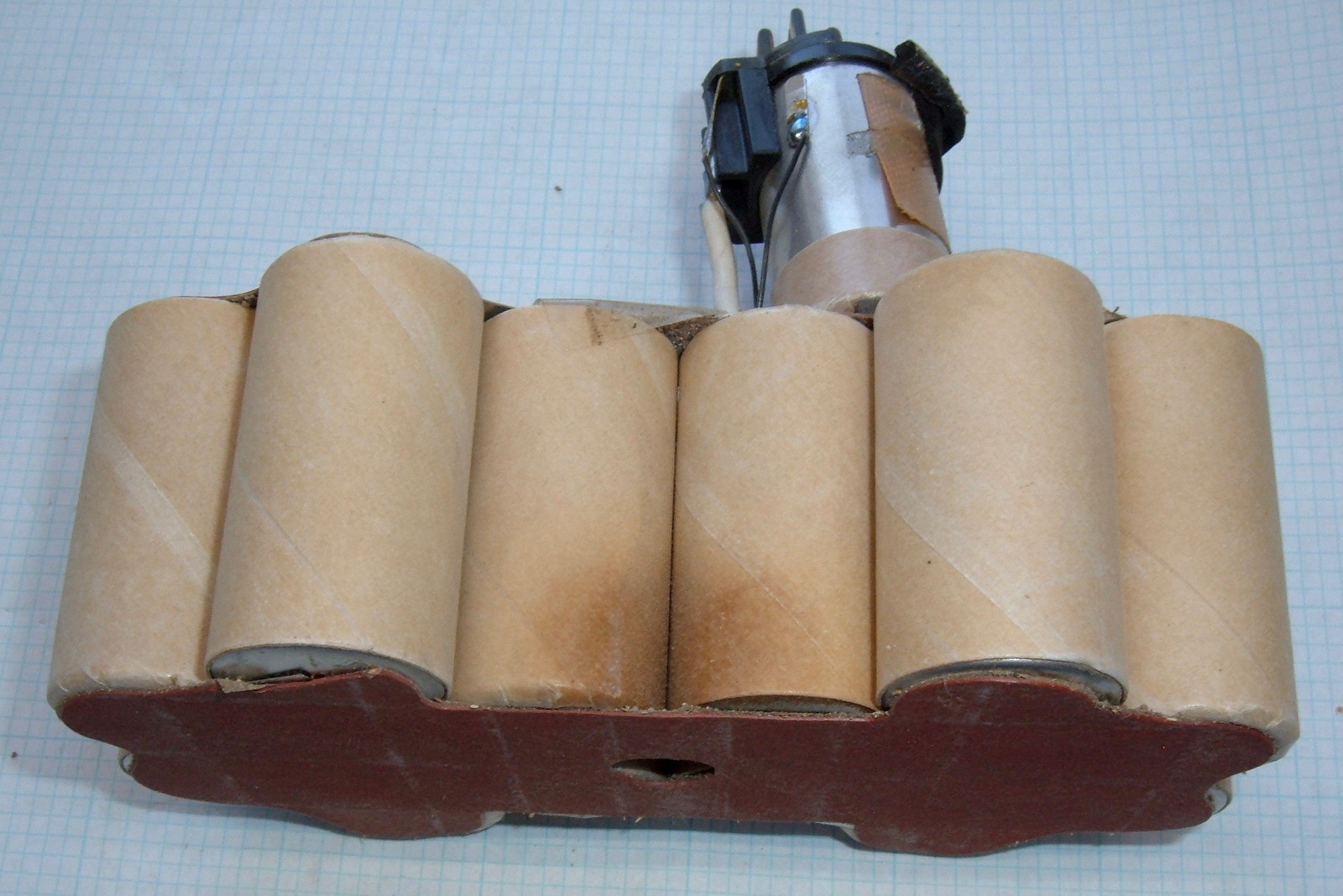
DeWalt 18V XR2 (DW9095)
Finally, I have the DeWalt 18V XR2 battery - also a heavy pack at 966g (2lb 2.1oz). Like the earlier packs in this post, there are just two pins - nothing fancy at all for thermal monitoring.
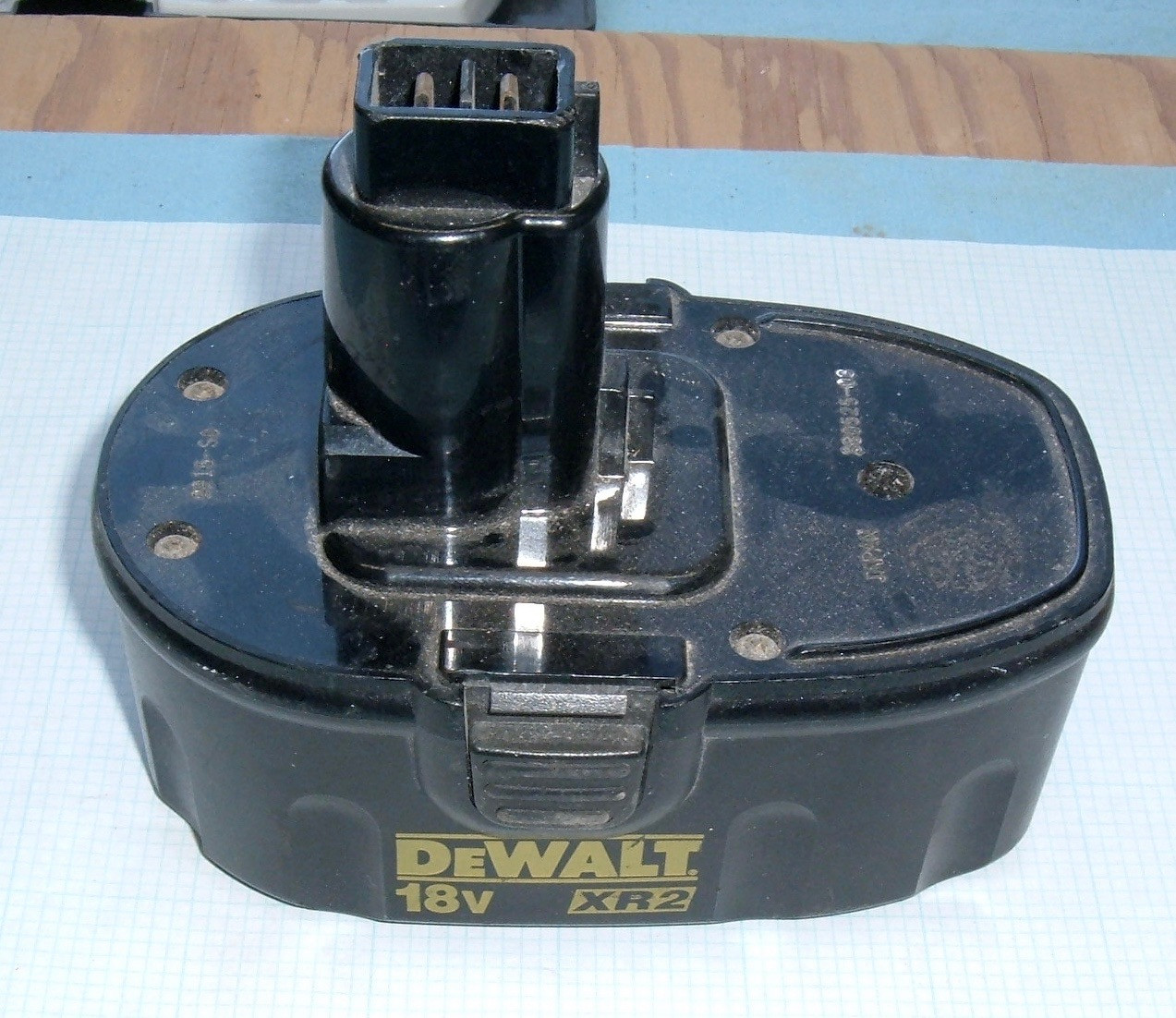
This pack is the big brother to the 14.4V pack I pulled apart! With the top off, the similarities are striking. The pack has a white cardboard cover and a black shrink wrap around the outside.
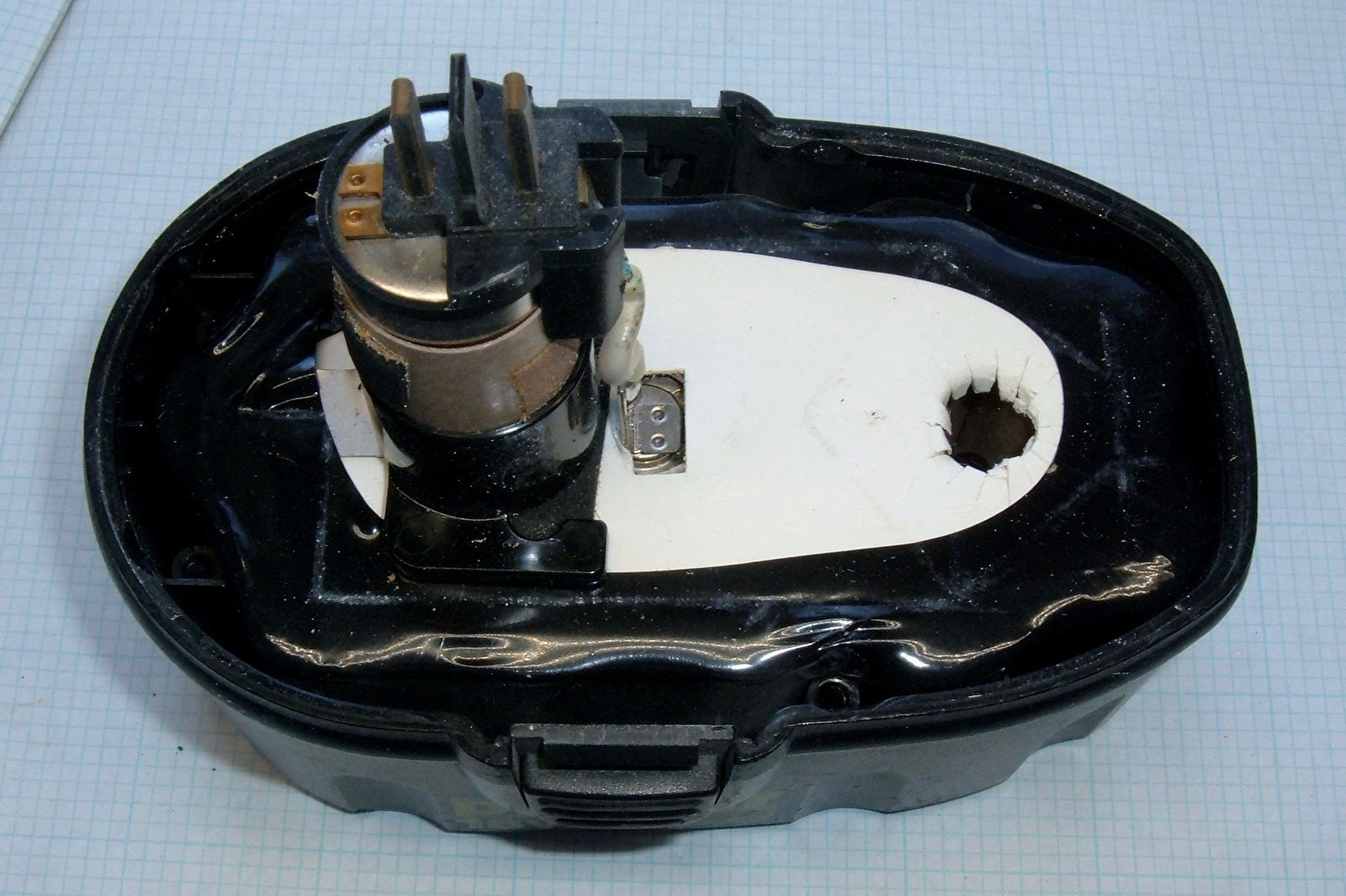
And, like the other packs, the cells are entirely unlabeled. Here’s the bottom cell layout.
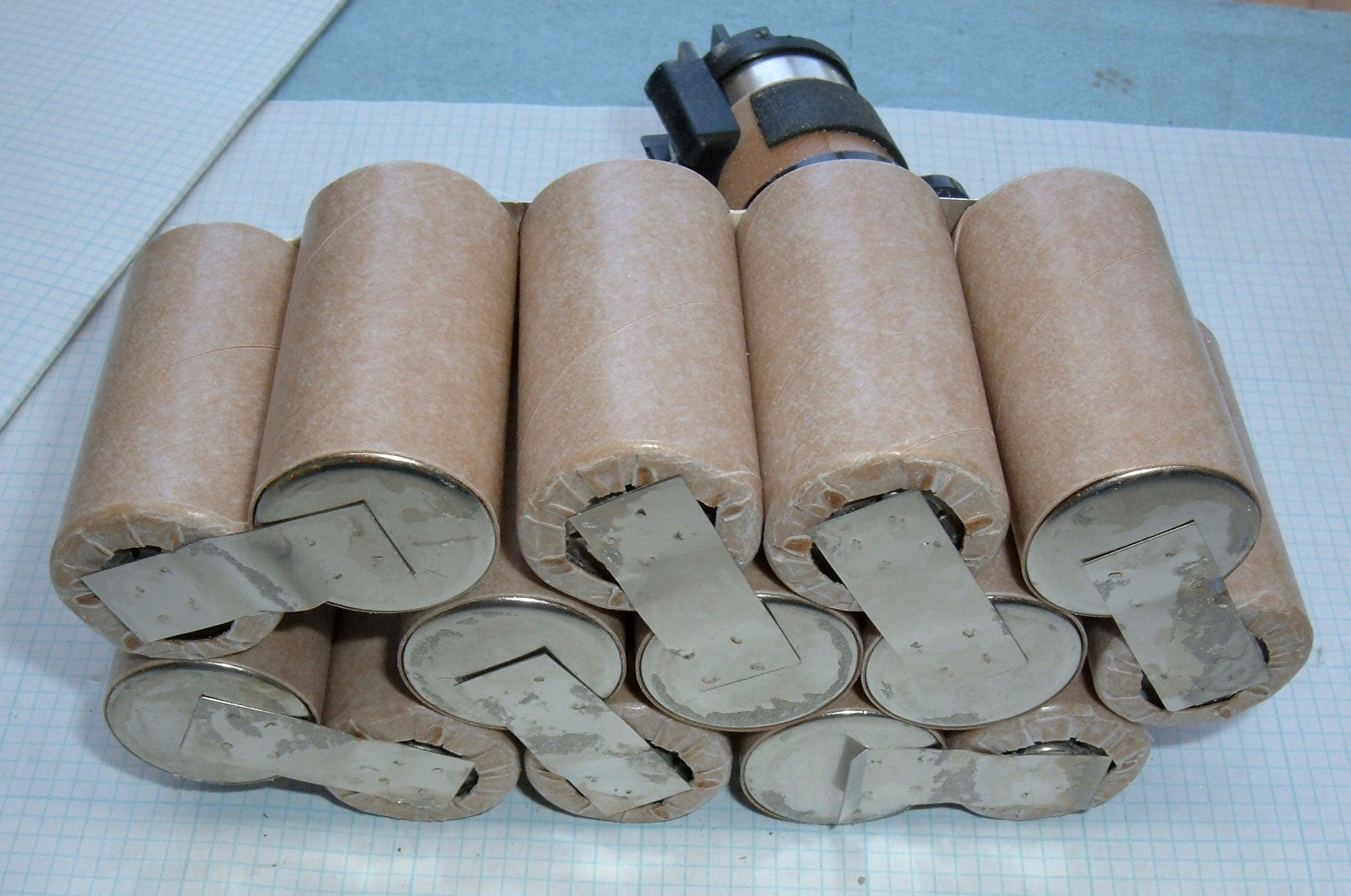
And the top. Nothing exciting here.
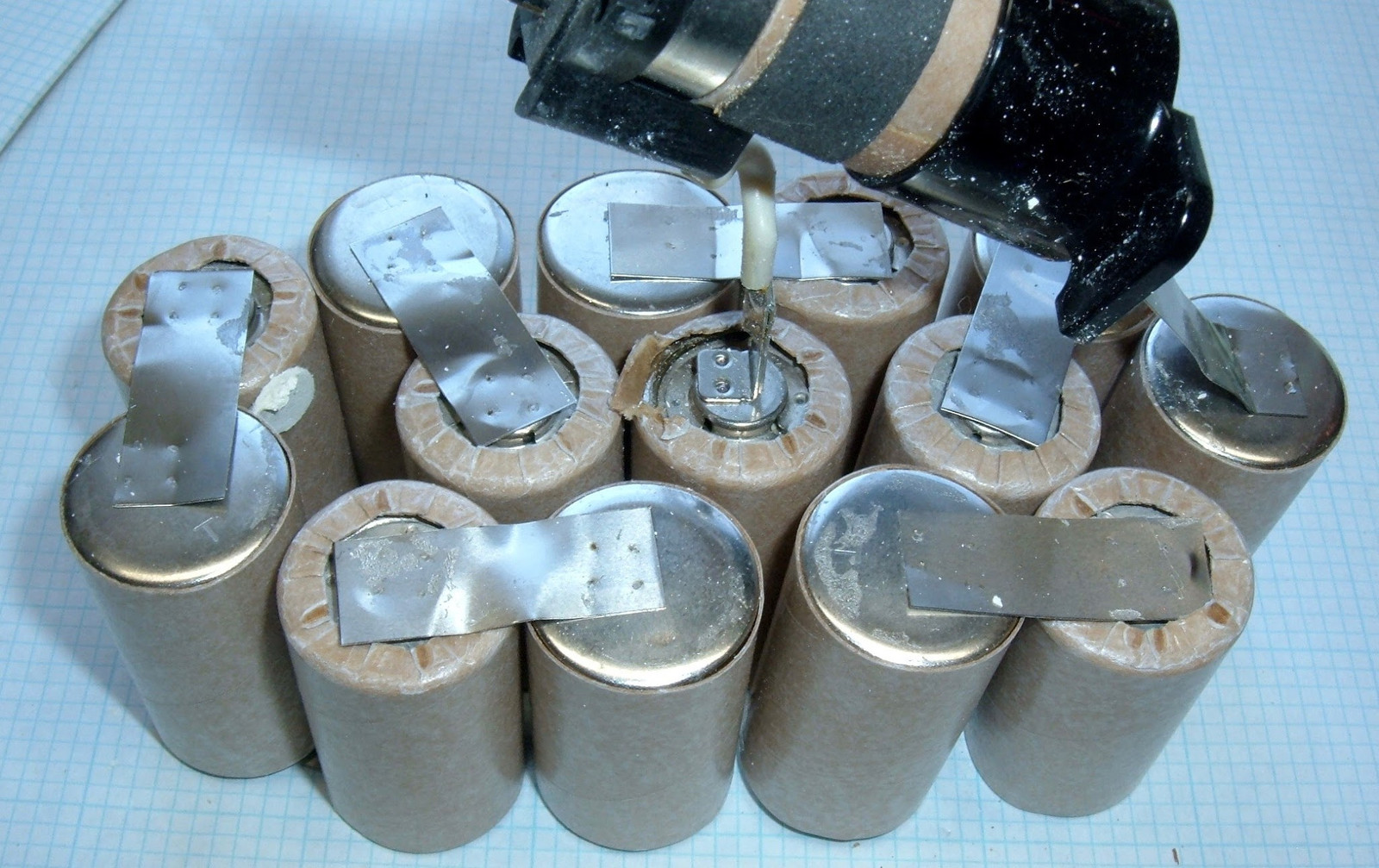
Final Thoughts
DeWalt NiCd tool batteries. Either 12S for 14.4V, or 15S for 18V. Otherwise, almost entirely identical, and entirely made of completely unlabeled cells. I have absolutely no idea what these cells are in terms of capacity, because they have no markings at all. Even with the cardboard insulation removed, there’s nothing.
I even tried to charge a few, but they wouldn’t take a charge, and I didn’t feel like forcing them. So… mystery meat NiCd!
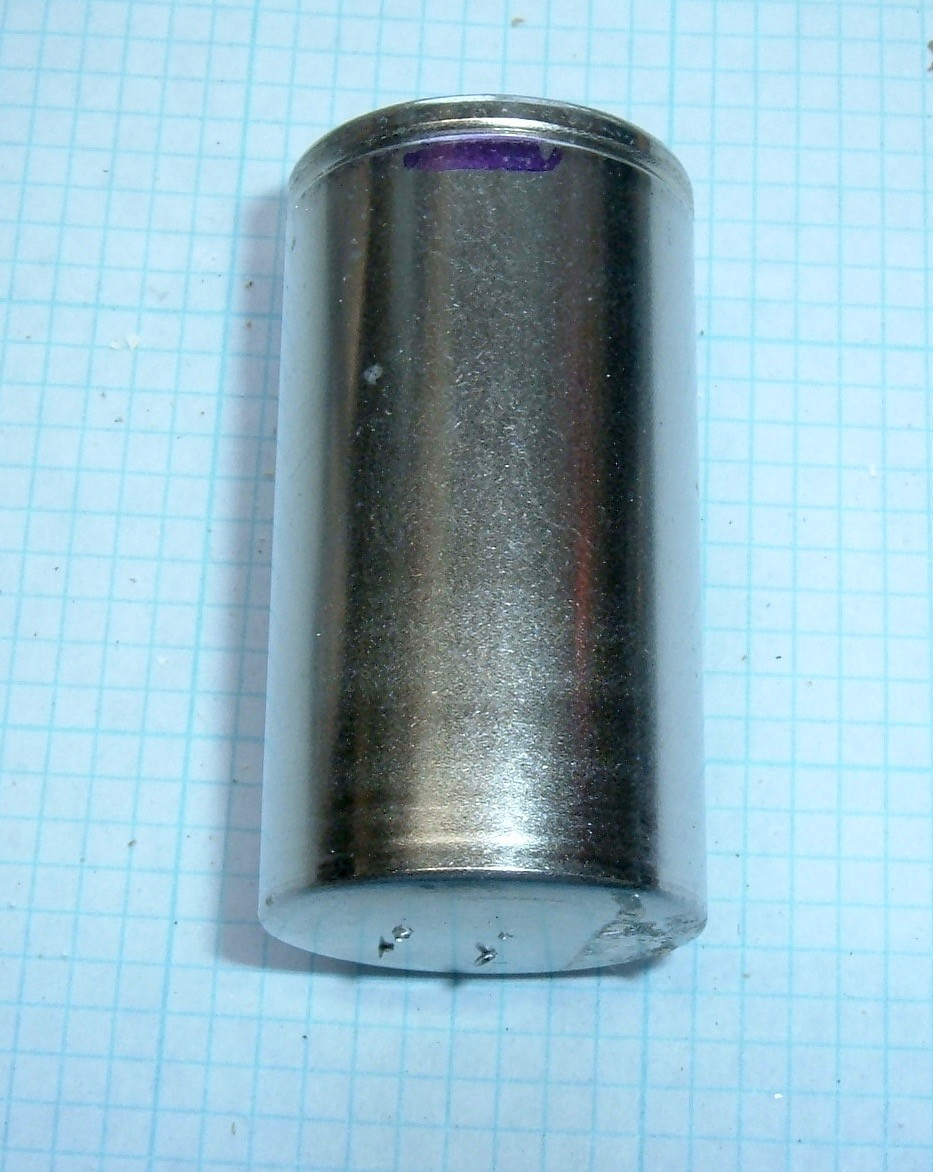
Anyway. In contrast to the lithium packs, which were interesting and different, these packs are all pretty much the same thing with various size cells. They’re not particularly interesting or exciting.
And, with that, I’m happy to announce that I’m done with tool pack teardowns for now. I’ve gone through my stock, torn apart the unique packs, analyzed them, and next week will be back to something that is hopefully a bit more interesting - how I made it through this winter in my office!
Comments
Comments are handled on my Discourse forum - you'll need to create an account there to post comments.If you've found this post useful, insightful, or informative, why not support me on Ko-fi? And if you'd like to be notified of new posts (I post every two weeks), you can follow my blog via email! Of course, if you like RSS, I support that too.
